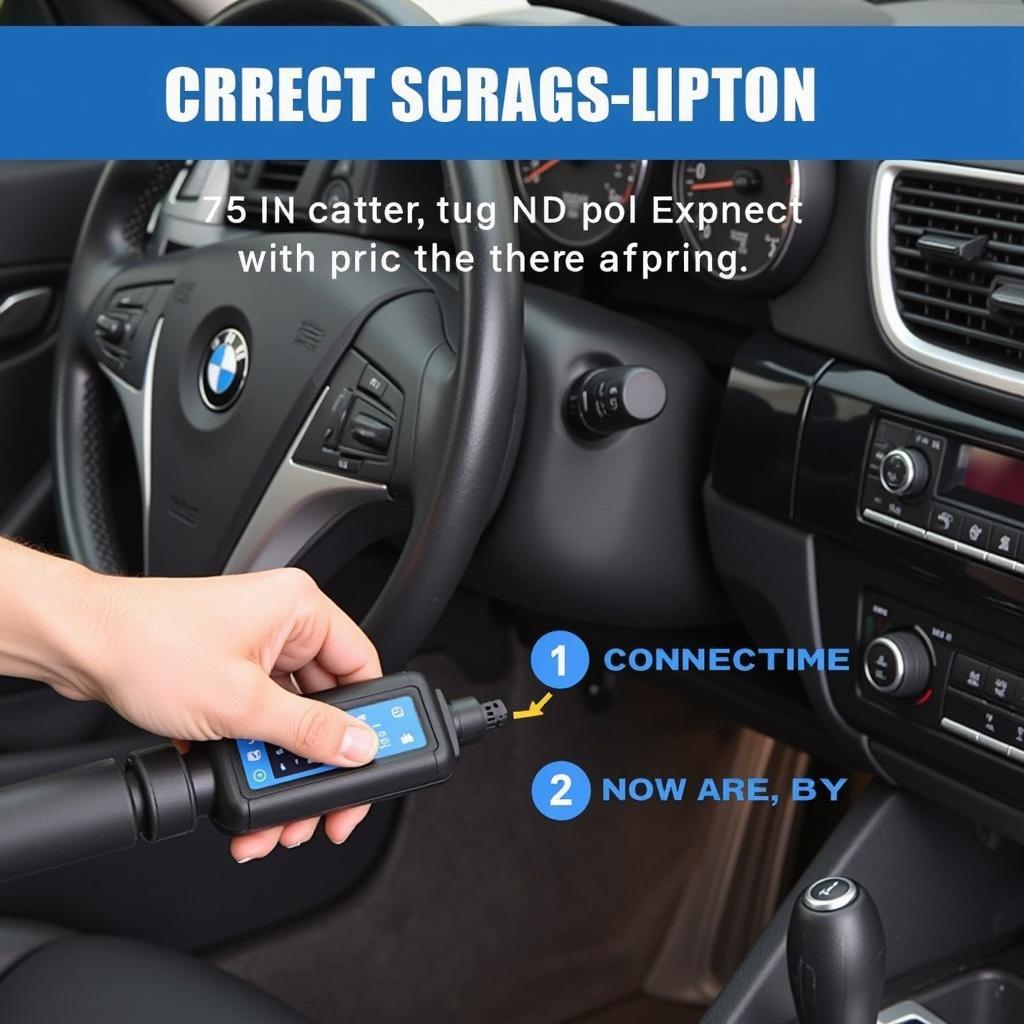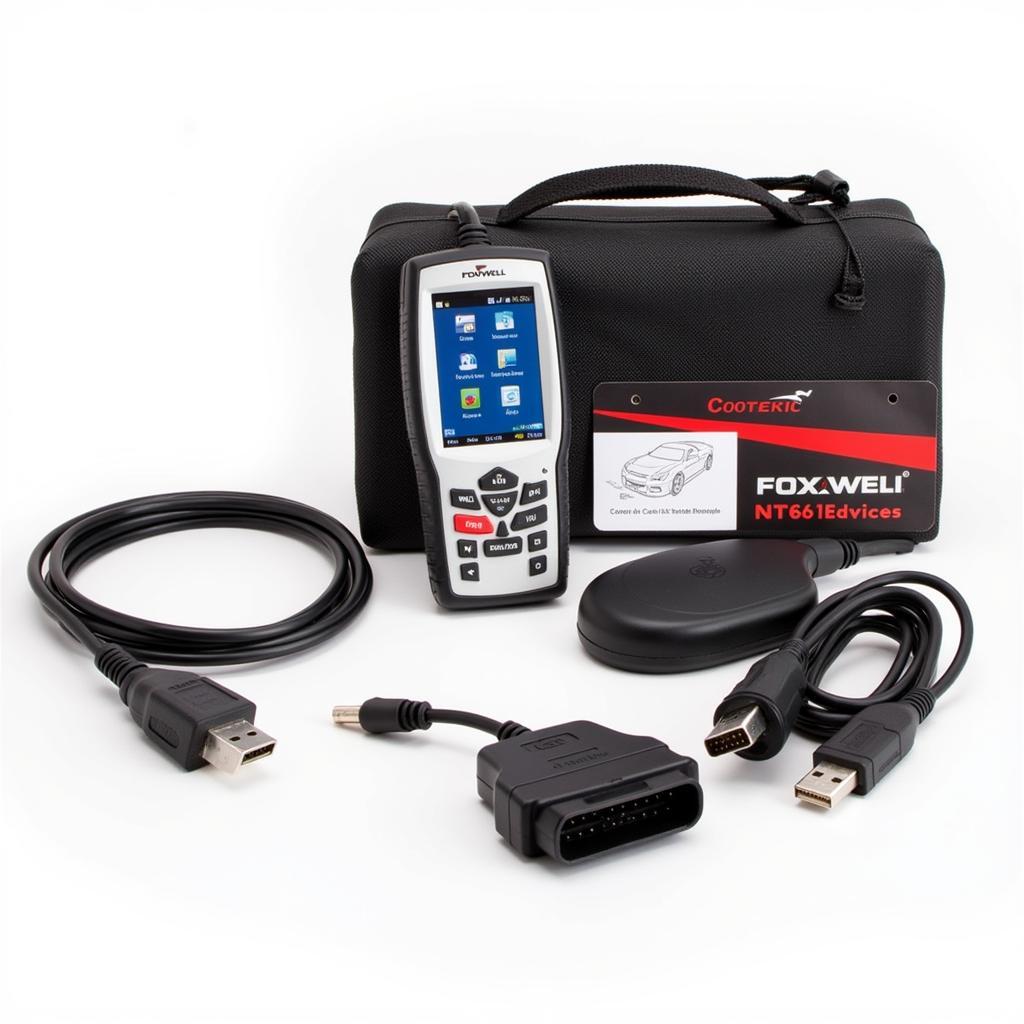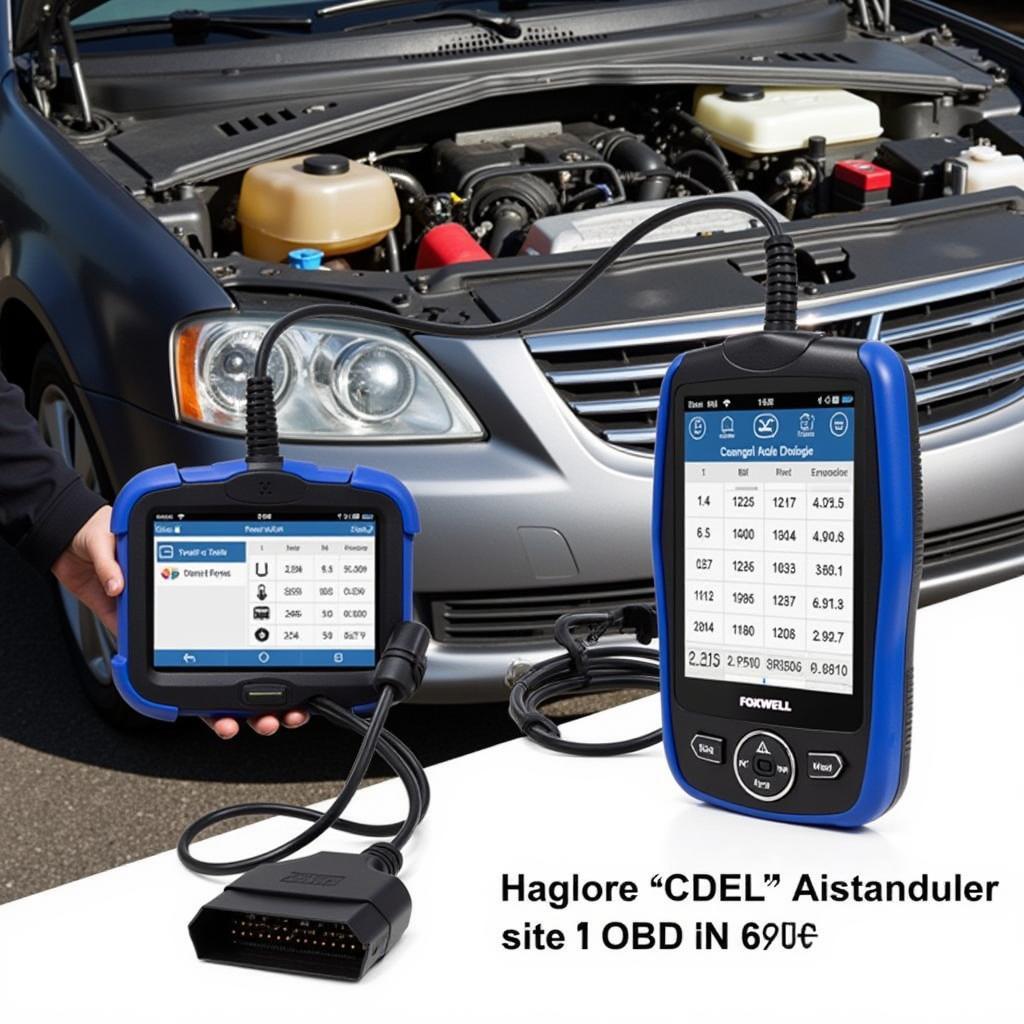Understanding and interpreting diagnostic trouble codes (DTCs) is crucial for effective vehicle repair. Foxwell scan tools are a popular choice for both DIYers and professionals, offering comprehensive diagnostic capabilities. This guide delves into the world of Foxwell Codes, explaining how to read them, interpret their meanings, and use them to pinpoint and resolve vehicle issues.
Understanding Foxwell Codes and Their Importance
Foxwell codes, essentially DTCs read by a Foxwell scanner, are alphanumeric representations of specific vehicle malfunctions. These codes are standardized, adhering to the Society of Automotive Engineers (SAE) protocols, ensuring consistency across different vehicle makes and models. These codes are invaluable in providing a starting point for diagnosing and troubleshooting car problems, saving both time and money. They offer a more precise approach than guessing, allowing for targeted repairs and preventing unnecessary component replacements.
One of the advantages of Foxwell scanners is their ability to read codes from various vehicle systems, including engine, transmission, ABS, airbags, and more. This versatility makes them a powerful tool for diagnosing a wide range of automotive issues. Accurate interpretation of these codes is crucial, as misinterpretations can lead to incorrect diagnoses and unnecessary repairs. For example, a code related to a faulty sensor might be misinterpreted as a problem with the component the sensor monitors, leading to the replacement of a perfectly functioning part.
How to Read Foxwell Codes
Reading foxwell codes is a straightforward process. First, connect the Foxwell scanner to the vehicle’s OBD-II port, usually located under the dashboard. Then, turn the ignition on, but do not start the engine. Select the appropriate vehicle make and model on the scanner. Finally, initiate the code reading function on the scanner. The retrieved codes will be displayed on the scanner’s screen. You can find more details on how to read foxwell codes.
What does a Foxwell code look like? A typical Foxwell code consists of a letter followed by four digits. For instance, P0171 indicates a lean fuel mixture. The first letter indicates the system (P for Powertrain, B for Body, C for Chassis, U for Network).
Interpreting Foxwell Codes: Beyond the Surface
While reading the codes is simple, accurate interpretation requires more than just looking up the code definition. Understanding the context and considering other factors is essential. For example, a P0300 (random misfire) code could be caused by several issues, from spark plugs to fuel injectors or even a vacuum leak. Further diagnosis is needed to pinpoint the exact cause. Similar information can be found on foxwell transmission codes.
Why is understanding the context important for interpreting Foxwell codes? Because the same code can have different underlying causes depending on the vehicle’s specific make, model, and year. Additionally, some codes might be triggered by intermittent issues, making them challenging to diagnose. Knowing the vehicle’s history, recent repairs, and any accompanying symptoms can aid in accurate interpretation.
Foxwell DTC: Advanced Diagnostic Capabilities
Foxwell scanners offer more than just code retrieval. Many models provide advanced diagnostic functions, including live data streaming, component actuation tests, and special functions like ABS bleeding and DPF regeneration. These features allow for more in-depth analysis and precise troubleshooting. Knowing about foxwell dtc will help you understand more.
Common Foxwell Codes and Their Meanings
Certain Foxwell codes appear more frequently than others. P0420 (catalyst system efficiency below threshold) is a common emission-related code. P0171 (system too lean bank 1) and P0174 (system too lean bank 2) often indicate vacuum leaks or fuel delivery issues. P0300 (random/multiple cylinder misfire detected) points towards ignition or fuel-related problems. More specific codes like foxwell nt650 toyota codes provide targeted diagnostic information.
What are some frequently encountered Foxwell OBD2 codes? Common ones include P0420, P0171, P0174, and P0300. These often relate to emissions, fuel delivery, and ignition systems respectively. Further reading about foxwell obd2 codes will be beneficial.
Conclusion
Foxwell codes are a valuable tool for car owners and technicians alike. Understanding how to read and interpret these codes empowers you to effectively diagnose and address vehicle issues. While the codes provide a crucial starting point, remember to consider the broader context and utilize the advanced diagnostic capabilities of your Foxwell scanner for accurate troubleshooting. For any assistance or further guidance, connect with the experts at ScanToolUS at +1 (641) 206-8880 or visit our office at 1615 S Laramie Ave, Cicero, IL 60804, USA. We’re here to help you navigate the complexities of automotive diagnostics and ensure your vehicle runs smoothly.



